Key takeaways
- The Portland Writers Community fosters a supportive environment that encourages growth and creativity among writers of all levels.
- Effective preparation for readings includes selecting resonant pieces, rehearsing aloud, and familiarizing oneself with the venue to reduce nerves.
- Personalized promotion and engaging storytelling can enhance attendance and create a meaningful connection with the audience.
- Creating an inviting atmosphere and maintaining thoughtful pacing during events encourages audience participation and keeps energy levels high.
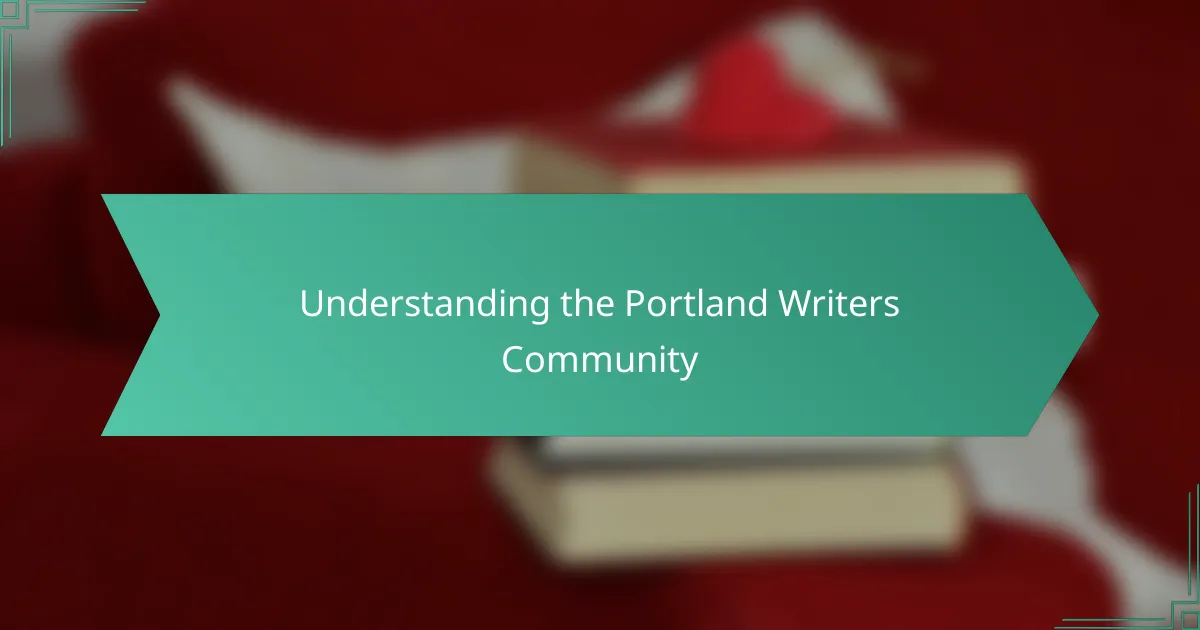
Understanding the Portland Writers Community
The Portland Writers Community is more than just a group of people who share a love for writing; it’s a vibrant network where creativity thrives and connections deepen. When I first joined, I was amazed by how supportive everyone was—whether you’re a novice or a published author, there’s a genuine eagerness to help your voice be heard. Have you ever experienced a space where your ideas spark conversations that linger long after the meeting ends? That’s what makes this community so special to me.
What strikes me most about Portland’s writers is their passion—not just for storytelling but for nurturing each other’s growth. The events and gatherings feel less like formal sessions and more like intimate conversations with old friends, where feedback is honest but kind. It’s rare to find a community where vulnerability is welcomed as a strength rather than a risk.
Being part of this community means immersing yourself in a collective journey of exploration and expression. I often wonder how many incredible stories remain hidden without such supportive networks. This is why understanding the Portland Writers Community is crucial—it’s a reminder that writing doesn’t have to be a solitary endeavor, but a shared adventure full of encouragement and discovery.
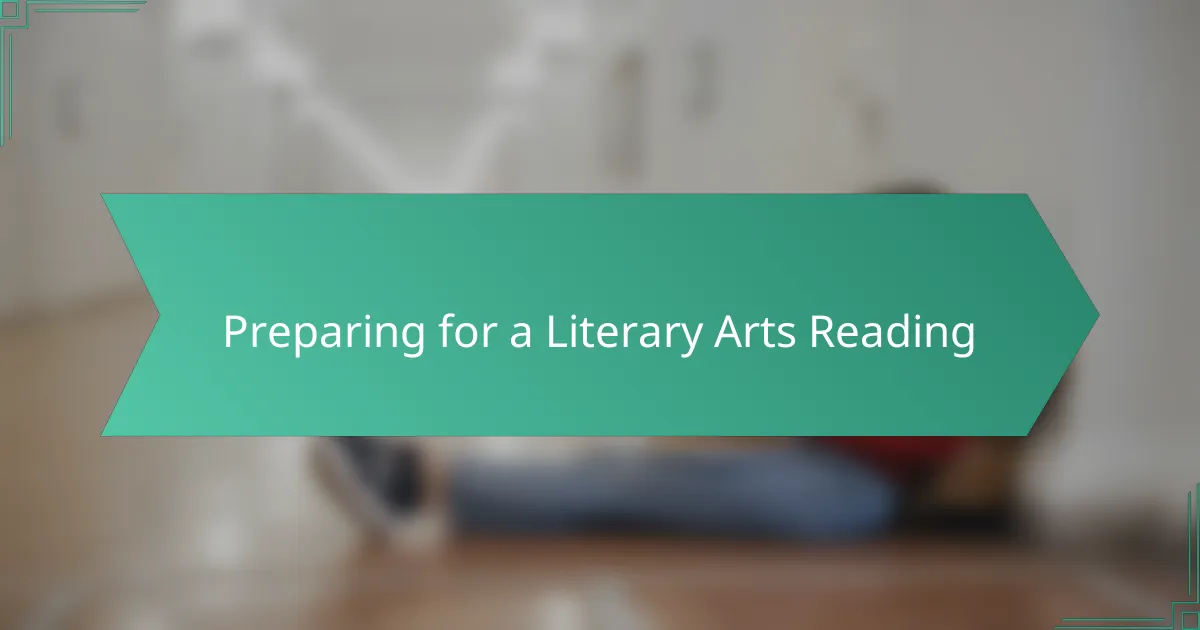
Preparing for a Literary Arts Reading
Preparing for a Literary Arts reading always begins with choosing pieces that resonate deeply with me—ones I feel excited and confident to share aloud. Have you ever noticed how certain poems or stories almost seem to speak directly to an audience? I try to tap into that energy, practicing until the words feel alive and natural on my tongue.
I also make it a point to rehearse not just silently but out loud, paying attention to pacing and tone. In one reading, I remember stumbling over a phrase that I hadn’t really practiced, and it threw off my flow completely. Since then, I treat rehearsal like a conversation, imagining how my audience will react and adjusting my delivery accordingly.
Finally, I find it helpful to arrive early and get a feel for the space—how the microphone sounds, the seating arrangement, even the lighting. That small step reduces nerves significantly because it turns an unknown environment into a familiar one. Have you ever noticed how being comfortable in your surroundings can totally change your performance? For me, this preparation makes sharing my work feel less daunting and more like a true exchange.
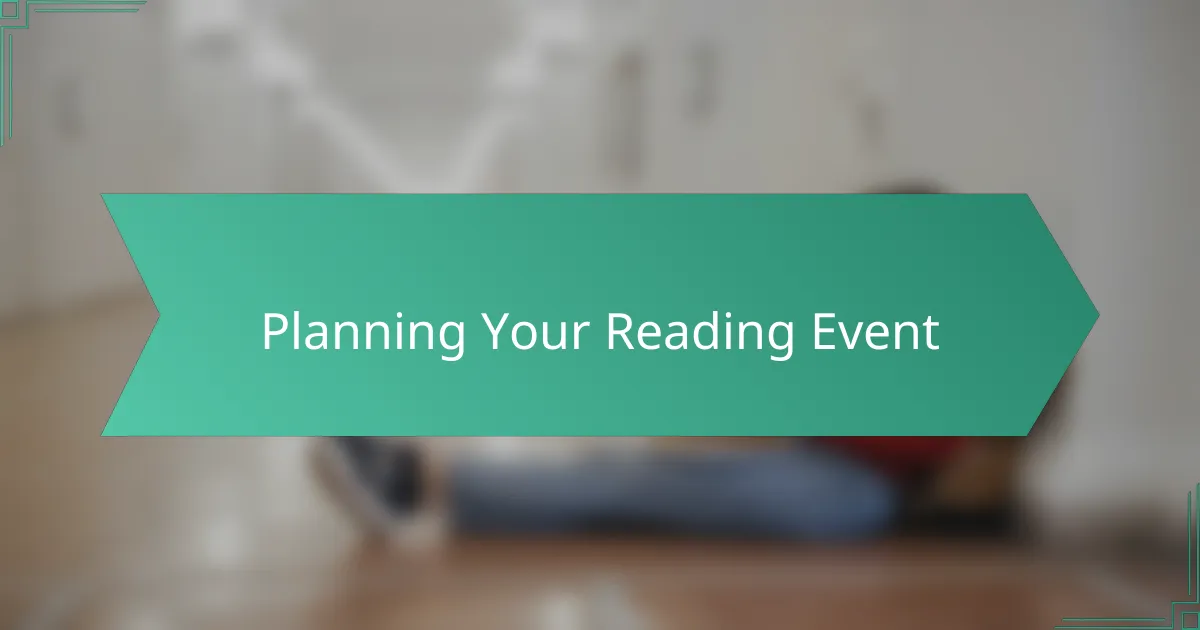
Planning Your Reading Event
When I started planning my reading event at Literary Arts, the first thing I realized was how important setting a clear date and time is. Have you ever tried to gather a group only to find half your guests double-booked? I learned the hard way that choosing a slot that fits the community’s rhythm makes all the difference in attendance and energy.
Next, I focused on promoting the event thoughtfully. Rather than blasting out generic invites, I reached out personally to friends and fellow writers, sharing why this reading mattered to me. That personal touch sparked real excitement, and I watched as the RSVPs steadily grew—it felt like building a wave of anticipation together.
Finally, thinking through the logistics—from seating arrangements to technical needs—helped me breathe easier on the day of the event. I remember wondering, “Will the mic work? Is the space cozy enough?” By addressing these questions early, I found myself more present during the reading, fully engaged with the audience instead of distracted by last-minute hiccups. Planning, in this way, turned into a quiet act of care for both myself and everyone who showed up.
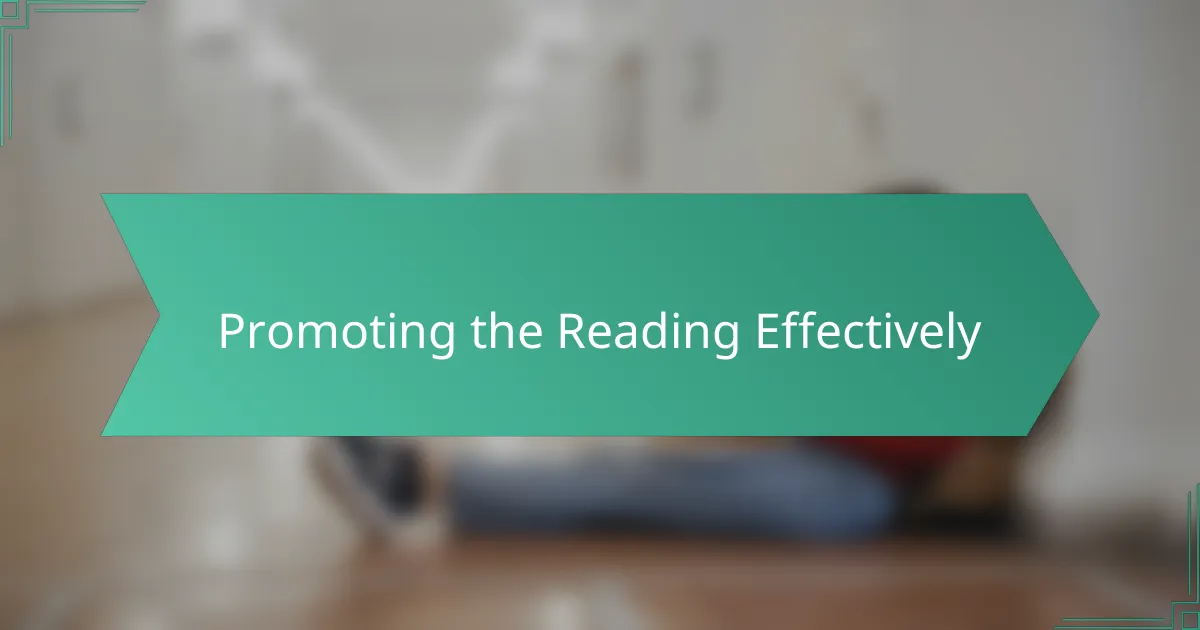
Promoting the Reading Effectively
Promoting the reading effectively felt like an art in itself. I discovered that sharing personal stories about why the pieces mattered to me created a genuine connection even before anyone arrived. Have you ever noticed how authentic enthusiasm can be contagious? When I spoke from the heart in my invitations, people seemed to lean in closer, eager to be part of something meaningful.
Social media was a key player, but I learned that it’s not just about posting an event link. Crafting thoughtful captions and tagging friends made each post feel like a friendly nudge rather than an announcement lost in the noise. I also found engaging with local writing groups online helped spread the word naturally, turning followers into attendees.
Last minute reminders turned out to be surprisingly effective, too. I sent a quick message the day before, not to pressure anyone, but to share my excitement bubbling up again. That small gesture seemed to rekindle interest, and I saw a noticeable uptick in attendance. It made me realize promotion isn’t a one-time act—it’s a conversation that builds as the reading approaches.
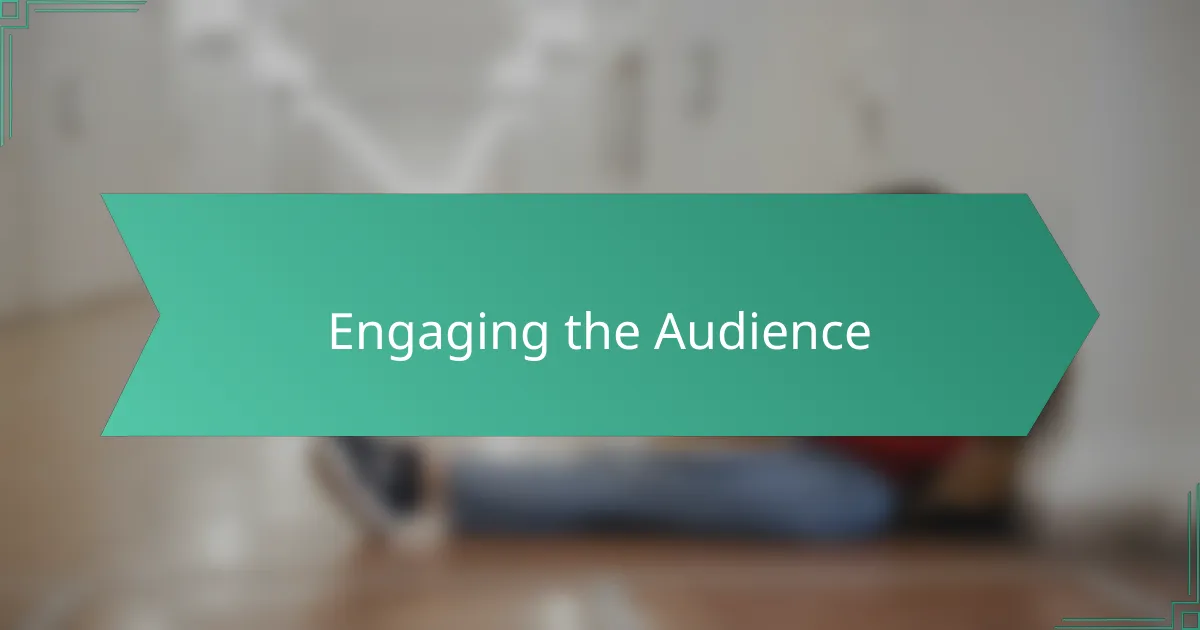
Engaging the Audience
Connecting with the audience during a reading feels like catching a spark and sharing it in real time. I remember one moment when a listener’s laugh or sigh made me realize that my words weren’t just heard—they were felt. Have you ever noticed how that silent exchange, like eye contact or a quick nod, can turn a reading into a shared experience rather than a monologue?
Sometimes, I find posing a simple question within a piece invites listeners to travel inside the story with me. It’s as if I’m pulling them gently by the sleeve, encouraging them to lean in and participate. That kind of engagement makes the atmosphere electric and reminds me why reading aloud is such a unique form of connection.
I also pay close attention to pacing and pauses, because silence can be just as powerful as the next word. Pausing at the right moment lets the audience absorb the emotion or imagery, creating space for their own thoughts to unfold. In those quiet beats, I sense a collective breath—and it’s in that shared stillness that connection truly deepens.
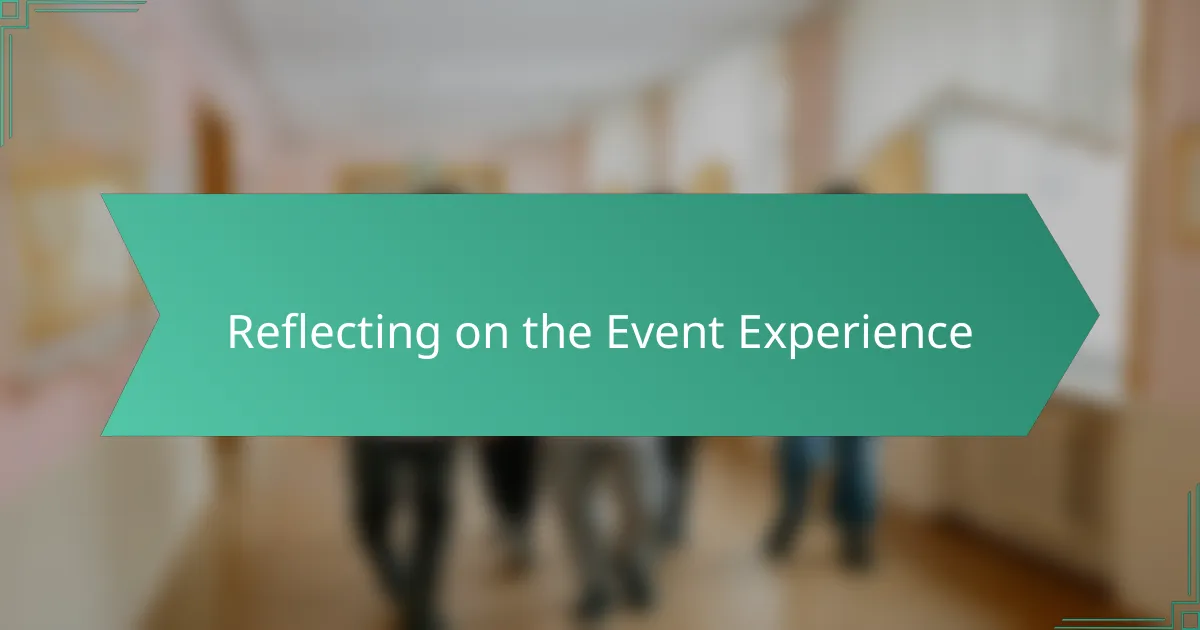
Reflecting on the Event Experience
Looking back on the event, I’m struck by how much the atmosphere shaped my experience. Have you ever noticed how the energy in the room can lift your confidence or, sometimes, catch you off guard? That evening, the warmth from the audience made every word I shared feel like it mattered—like we were all part of a story unfolding together.
One moment stands out vividly: as I read a piece close to my heart, a listener’s quiet sigh reminded me why these gatherings are so powerful. It’s not just about speaking—it’s about creating a space where emotions can be felt and exchanged. That exchange, subtle as it may be, gave the night a meaning beyond my expectations.
Reflecting now, I realize how much I learned about presence and vulnerability. Did I feel nervous? Absolutely. But leaning into that nervousness, rather than resisting it, opened the door to genuine connection. It’s an experience I hope to carry forward in every reading I do.
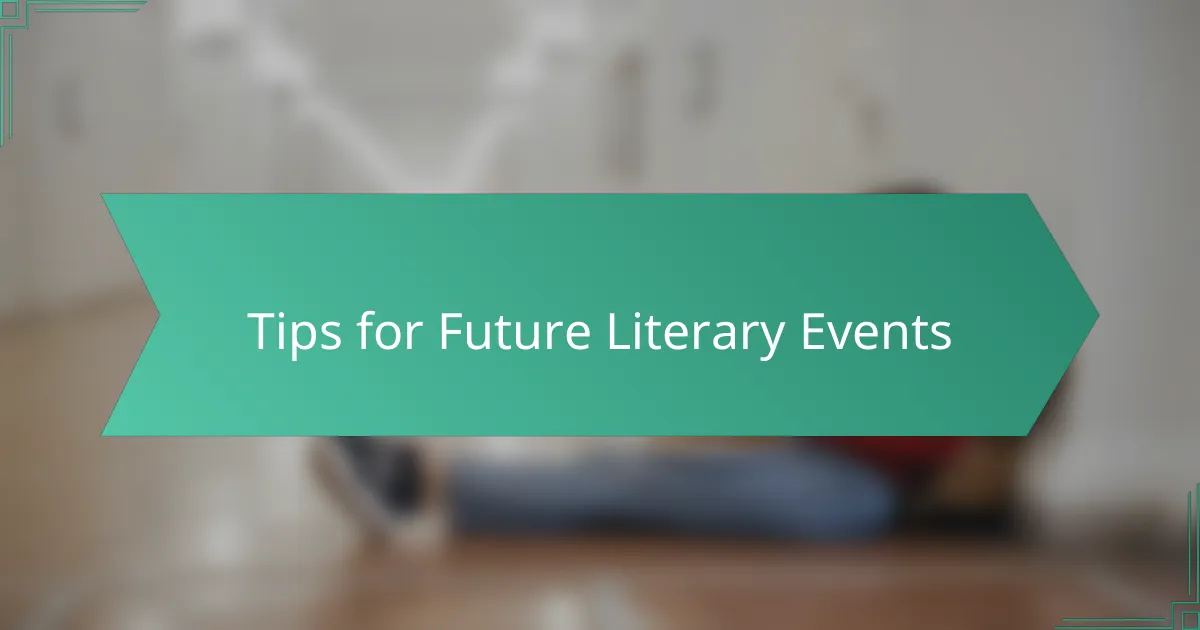
Tips for Future Literary Events
One thing I’ve learned is to always have a backup plan for technical glitches. Have you ever started a reading only to have the microphone cut out midway? Being prepared with a spare mic or even practicing projecting your voice can save the moment—and your nerves.
It also helps to create a welcoming environment where attendees feel encouraged to participate. I found that inviting questions or brief reflections after the reading sparked conversations that made the event linger in people’s minds long after it ended.
Lastly, pacing the event thoughtfully keeps energy high. I once went too long without a break, and I noticed people’s attention slipping. Scheduling short pauses or mixing different styles of readings can refresh the room and maintain a vibrant atmosphere throughout.